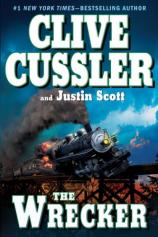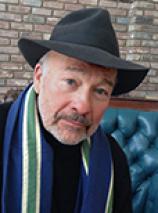The Wrecker
Review
The Wrecker
As does the cover photo of an exploding locomotive atop a wooden
railroad trestle, authors Clive Cussler and Justin Scott snatch the
reader’s attention from chapter one. Cussler arguably is best
known for RAISE THE TITANIC! (the third in his series of Dirk
Pitt novels), and he and co-author Scott (whose pseudonyms
include Paul Garrison) specialize in transportation-themed novels,
many of which are set at sea. This is the second in the Isaac
Bell historical thriller series, following THE CHASE. Both are
set shortly after the turn of the 20th century, a time of the Great
San Francisco Earthquake and collapsing banks with the Panic of
1907, in which stocks lost half their value.
As the recession in 2001 was complicated by terrorist attacks on
9/11, the 1907 economic chaos in this time-travel educational
thriller is compounded by a mysterious saboteur dubbed the Wrecker,
a diabolical man who recruits hobos to create havoc for the
railroads, the main form of transportation a century ago. But the
Wrecker thinks “he [is] no radical. He [is] no destroyer. He
[is] a builder.” However, the vile Wrecker sets explosives so
that “only the full weight of a locomotive could trigger the
detonator.” After blasts sabotage Southern Pacific Railroad,
the Van Dorn Detective Agency dispatches its best: Isaac Bell.
In 1907 --- a year when thousands died in train-related
accidents --- a New York Times article quoted Central
Railroad’s W.C. Brown’s denunciation of public
criticism of railroads as being “a menace to national
economy.” That year also marked the end of “robber
barons” such as Edward Henry Harriman and James J. Hill, who
took over so many railroads that various stock market panics
ensued. The stage is set with references to 1903’s The
Great Train Robbery, but it’s a certain senator who,
like his counterparts today, uses his influence to get more
ill-gotten gains than in the film.
In this research-rich installment, Southern Pacific
Railroad’s president, Osgood Hennessy, epitomizes the term
“robber baron.” Intent on controlling all railroads,
Osgood’s crowning glory is a massive trestle being
constructed over Oregon’s Cascade Canyon, a slightly smaller
version of its better known Arizona sibling. Osgood wagers all on
the Cascade Canyon Bridge that will reduce transportation time
through rugged mountains --- and channel all transportation of
goods on his railroad. Osgood’s bridge can be compared to the
Panama Canal in its relevance to speeding transportation of goods.
And that bridge is like a magnet, attracting the Wrecker to achieve
the pinnacle of his diabolical career.
Purposely stilted dialogue of the period derails the plot at
times, and train speeds at 127 MPH raise eyebrows in disbelief.
Curiously, Ma Bell (no relation to Isaac) completes a phone call
from Oakland to L.A. quicker than traditional telegraphs of the
time: “Telephone the Los Angeles office. Tell them I said to
get to the wreck and don’t let anyone touch anything.
Including the police.” Isaac and other Van Dorn detectives
look down on mere police as though they’re all Keystone
Kops.
Although the Wrecker seems always a step ahead of him, Isaac
uses old-fashioned cunning to deduce where he will strike next.
Without Google or cell phones and the only twitter being from
birds, Isaac successfully puts himself into the mind of the
Wrecker. With the Wrecker’s identity pegged midway through,
this is more of a “whydunit” than a
“whodunit.” And the authors are more powerful than a
locomotive in their ability to transport readers back a century
with this equally powerful vehicle.
Reviewed by L. Dean Murphy (DeanMurphy@Verizon.net) on January 24, 2011






